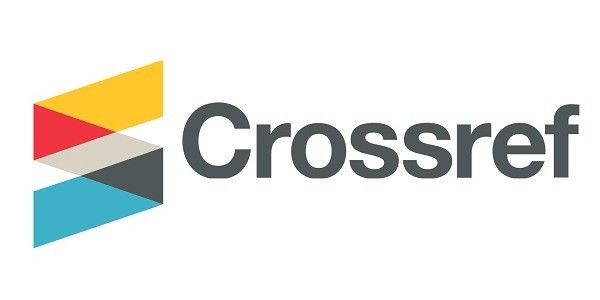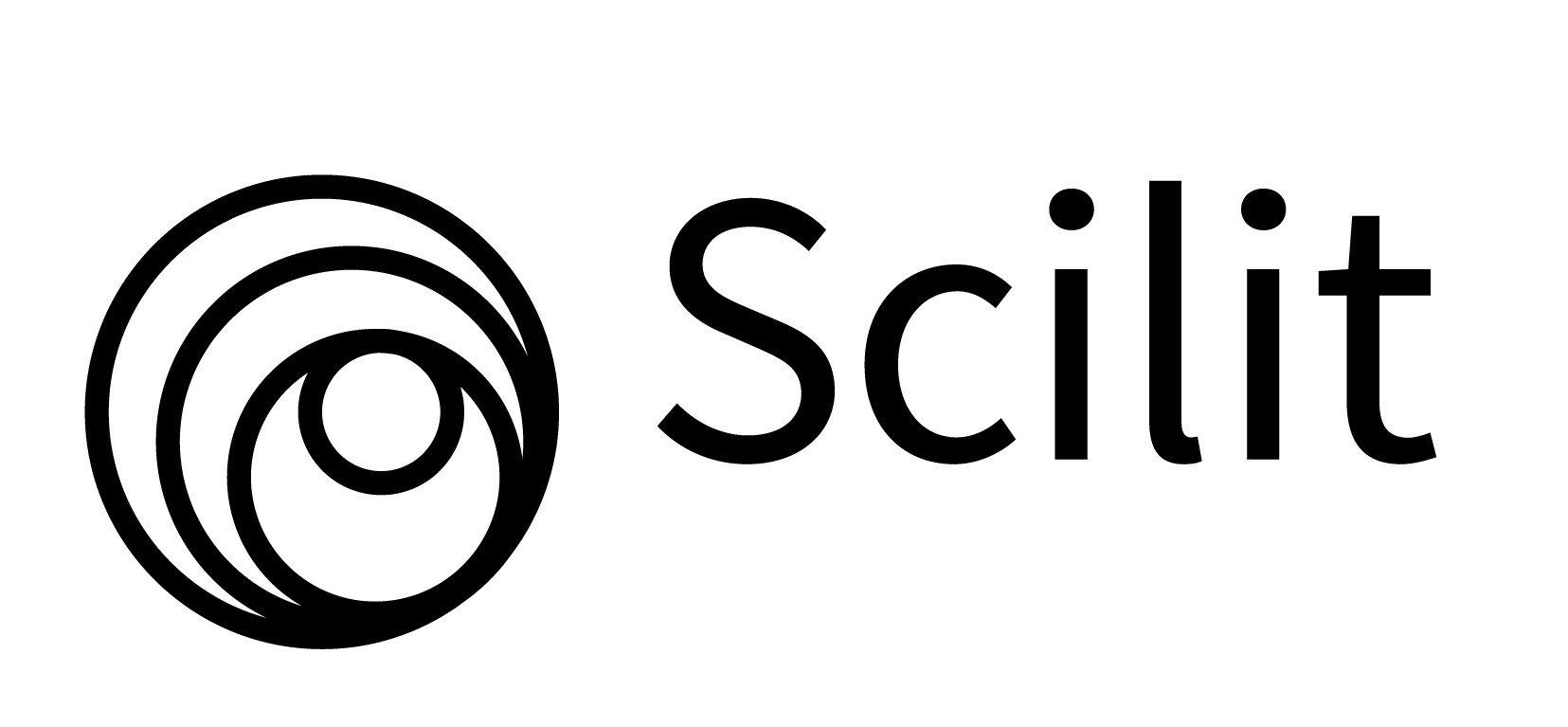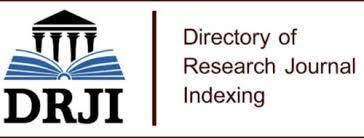Research Article
Effects of Bryophyllum Pinnatum Leaf Extract on the Prostrate Specific Antigen and Liver Enzymes in Albino Rats
- Dr. Nnodim Johnkennedy
Corresponding author: Dr. Nnodim Johnkennedy
Volume: 1
Issue: 5
Article Information
Article Type : Research Article
Citation : Williams Comfort Ekom, Nnodim Johnkennedy, Nwanguma Eberechi, Ibanga Etim Imoh, Ihim Augustine. Effects of Bryophyllum pinnatum Leaf Extract on the prostrate specific antigen and liver enzymes in albino rats. Journal of Medical and Clinical Case Reports 1(5). https://doi.org/10.61615/JMCCR/2024/JULY027140704
Copyright: © 2024 Nnodim Johnkennedy. This is an open-access article distributed under the terms of the Creative Commons Attribution License, which permits unrestricted use, distribution, and reproduction in any medium, provided the original author and source are credited.
DOI: https://doi.org/10.61615/JMCCR/2024/JULY027140704
Publication History
Received Date
17 Jun ,2024
Accepted Date
01 Jul ,2024
Published Date
04 Jul ,2024
Abstract
This study was carried out to determine the effects of Bryophyllum pinnatum leaf extract on Prostrate specific antigen, Aspartate aminotransferase (AST) and Alanine aminotransferase (ALT), levels of albino rats. Thirty-five albino rats were randomly divided into five groups with seven rats in each group (n=7); Control (C) received normal feed only. Group 1 was administered with Bryophyllum pinnatum leaf extract 100 mg/kg, Group 2: Bryophyllum pinnatum extract 150 mg/kg, and Group 3 received Bryophyllum pinnatum leaf extract 200 mg/kg. Group 4: received Bryophyllum pinnatum leaf extract 250 mg/kg. This lasted for 28 days. Group 3 and 4 showed significantly decreased PSA (1.08±0.29ng/ml; 1.18±0.32ng/ml) AST (14.19±0.64iu/l, 14.05±0.71iu/l) and ALT (10.12±0.73iu/l, 10.98± 0.98iu/l) when compared with the control (PSA 2.08±0.29ng/ml, AST 16.41±0.93, ALT 13.77±0.51) respectively at p < 0.05. Bryophyllum pinnatum leaf extract has a hepatoprotective and prostrate protective effect.
Keywords: Bryophyllum pinnatum, leaf extract, prostrate protective effect, liver enzymes.
►Effects of Bryophyllum Pinnatum Leaf Extract on the Prostrate Specific Antigen and Liver Enzymes in Albino Rats
Williams Comfort Ekom1, Nnodim Johnkennedy1*, Nwanguma Eberechi1, Ibanga Etim Imoh2, Ihim Augustine3.
1Department of Biology, Saint Joseph’s University, Philadephia.
2Chemical Pathology Department, Federal College of Medical Laboratory Science and Technology, Jos Plateau State Nigeria.
3Department of Medical Laboratory Science, Faculty of Health Science and Technology, Nnamdi Azikiwe University, Awka.
Introduction
Humans particularly have been shown to benefit from medicinal plants in a variety of ways [1]. In herbal medicine, the majority of spices are used to treat or manage various illnesses. Bryophyllum pinnatum leaf is one of the spices [2]. Well-known for its therapeutic properties, Bryophyllum pinnatum has been incorporated into numerous traditional medical systems. This covers treating debility in general as well as fever, smallpox, otitis, cough, asthma, headache, and convulsions. Steroids, flavonoids, terpenoids, fatty acids, bufadienolides, protein and peptides, vitamins, polysaccharides, and other substances are among the numerous secondary metabolites that have been found in B. pinnatum [3]. Numerous investigations have also demonstrated the broad range of pharmacological effects that B. pinnatum extracts and purified substances can have both in vivo and in vitro.
These consist of immunomodulatory, antimicrobial, anti-ulcer, antihypertensive, antileishmanial, anticancer, and anti-diabetic effects [4]. According to Ayurveda, Bryophyllum pinnatum is used to make a variety of remedies and has a number of therapeutic properties. This plant is also known as bryophyllum pinnatum, cathedral bells, life plant, and magic leaf [5]. In English, it is referred to as Bryophyllum pinnatum. The Ayurvedic names for this plant include Bhasmapathri, Pashanbheda, or Panputti [7].
This plant has sour and salty-flavored leaves. It is always green because it is an evergreen [8]. Urinary tract conditions are treated with bryophyllum pinnatum. Additionally, Bryophyllum pinnatum can heal skin damage, edema, or wounds [9, 10]. This plant's influence on the prostrate gland has been linked. There is conjecture that it may impact the PSA level. Prostate cancer is detected with a PSA test [11]. Searching for cancerous hints before it manifests as symptoms is known as cancer screening. Prostate cancer grows fairly slowly in most cases. They may never result in health issues and do not spread outside of the prostate [12]. Prostate cancer can actually pose a serious threat to life. Prostate cancer screening aims to identify tumors that may spread more quickly so that early treatment can be provided [13. 14].
Thus, the goal of this study was to ascertain how Bryophyllum pinnatum extract affected albino rats' liver enzymes and prostate-specific antigens.
Materials and Methods
Plant material and extraction
The Bryophyllum pinnatum was bought from Ekenuwa market. It was identified and confirmed in the Department of Plant Biology and Biotechnology of Imo State University Owerri. They were washed, sundried, and ground into powder for use. The dried Bryophyllum pinnatum was milled to get a coarse powder used for extraction. The powder was macerated in a 400 g percolator with 250 mL of distilled water. The mixture was allowed to stand for 48 hours after it was filtered. The filtrate was then placed in an oven to evaporate and the solid residue was referred to as extract. The appropriate concentrations of the extract were made in distilled water for the experiment. Hence, the following concentrations i.e. 100mg 150 mg, 200mg, and 250mg were prepared.
Experimental design
The albino rats weighing (180-300 g) obtained from the Animal House of Imo State University were used in this investigation. The animals were kept in cages in a room and maintained at room temperature with a 12-hour light-dark cycle for one week to acclimatize. The animals were randomly assigned to five experimental groups with six rats in each group.
Thirty-five albino rats were randomly divided into five groups (n=7); Control (C) received normal feed only. Group 1 was administered with Bryophyllum pinnatum 100 mg/kg BW, Group 2: Bryophyllum pinnatum 150 mg/kg BW, Group 3: Bryophyllum pinnatum 200 mg/kg BW. Group 4: received 250mg/BW Bryophyllum pinnatum. In all groups, the extract was administered through an oral route. This treatment was performed by oral compulsion. All animals were allowed free access to food and water throughout the experiment.
This lasted for 28 days. The blood samples were collected and the levels of PSA, AST, and ALT were then measured.
Blood Collection
The animals were anesthetized with chloroform vapour, quickly brought out of the jar, and sacrificed. Whole blood was collected by cardiac puncture from each animal into clean dry test tubes. The blood in the clean dry test tubes was allowed to stand for about 15 minutes to clot and further spun in a Westerfuge centrifuge (Model 1384) at 10000 g for 5 minutes, serum was separated from the clot with a Pasteur pipette into sterile sample tubes for the estimation PSA, AST, and ALT.
Determination of PSA, AST, and ALT levels were determined using the standard method of Statistical analysis.
The results were expressed as mean standard deviation. The statistical evaluation of data was performed by using the student T-test.
Results
Table 1. Effect of liver enzymes (AST and ALT) on albino rats administered with different doses of extract of Bryophyllum pinnatum
|
Groups |
AST (iu/L) |
ALT (iu/L) |
|
Control |
16.41±0.93 |
13.77±0.51. |
|
Group1 |
16.22±0.54 |
13.10±0.29. |
|
Group2 |
16.12±0.87 |
13.86±0.42. |
|
Group3 |
14.19±0.64* |
10.12±0.73 * |
|
Group4 |
14.05±0.71* |
10.98± 0.98* |
*Significantly different from control at P<0.05
Table 2. Effect of PSA on albino rats administered with different doses of extract of Bryophyllum pinnatum
|
Groups |
PSA (ng/ml) |
|
Control |
2.08±0.29 |
|
Group1 |
2.71±0.03 |
|
Group 2 |
2.65±0.03 |
|
Group 3 |
1.08±0.29 |
|
Group 4 |
1.18±0.32* |
*Significantly different from control at P<0.05
Discussion
In this investigation, it was found that the albino rats given varying dosages of Bryophyllum pinnatum extracts had lower levels of the liver enzymes AST and ALT [15,16,17]. Serum aminotransferase levels are a sensitive marker of liver injury in parenchyma. ALT and AST are likely the most often utilized liver injury markers in clinical diagnosis and liver damage research. Regarding the appropriate application and understanding of these aminotransferases, there is some ambiguity. Furthermore, the limits of serum aminotransferases for outcome prediction and early injury identification have been brought to light by new research.
When Bryophyllum pinnatum extracts (250 mg/kg body weight) were administered, the ALT and AST activity significantly lowered in the treated groups. This may suggest that the plant extract has hepatoprotective properties. The plant may have a protective impact on the liver, as seen by the drop in AST activity in the treated groups brought about by the extracts. The transfer of an amino group from an amino acid to α-ketoglutarate is catalyzed by both ALT and AST. L-glutamate and either pyruvate or oxaloacetate, respectively, are the reaction products, and the amino acids are L-alanine and L-aspartate. An amino group and a keto group are exchanged overall. In both processes, pyridoxal 5'-phosphate (PLP; a derivative of vitamin B6) acts as a coenzyme. It is significant to remember that these responses are reversible. Beyond their evident involvement in amino acid metabolism, both ALT and AST have a variety of physiological activities because the reactants and products are crucial for many different cell processes.
They are crucial for energy homeostasis, for instance. The alanine-glucose cycle is arguably where ALT has the most significant role. In muscle, ALT uses an amino group from glutamate to convert pyruvate to the amino acid alanine. After entering the bloodstream, alanine is absorbed by the liver and converted back to pyruvate, which can be used to produce glucose, by hepatocytes' ALT. This mechanism is particularly crucial for controlling glucose during stressful circumstances, such as fasting or intense exercise. Additionally, it has been proposed that in specific circumstances, the mitochondrial isoform of ALT has a special role in gluconeogenesis.
The preservation of the NAD+/NADH ratio in cells may be the primary physiological role of AST. In order to promote glycolysis and electron transport, respectively, the malate-aspartate shuttle oxidizes NADH in the cytosol and decreases NAD+ in the mitochondrial matrix. AST is a crucial component of this process. Aminotransferase increases are often attributed to cell injury caused by rupture of the plasma membrane. The observation that serum ALT levels rise later in the course of injury after treatment with hepatocyte apoptosis inducers is consistent with this. Initially, these levels are low. Consider apoptotic cell death as a regulated process that results in little protein release into the extracellular region, akin to cell implosion. Oncotic necrosis, also referred to as a "cell explosion," can, nevertheless, develop in certain cells secondary to apoptotic induction.
Results from our earlier research using normal experimental rabbits administered aqueous extracts of Bryophyllum pinnatum [18] further corroborate the plant's hepato-protective properties. This suggests that Bryophyllum pinnatum extract may be able to protect the liver. This outcome is consistent with the report [19]. It is possible that the extracts include chemical components with hepato-protective qualities. Liver enzyme levels are never elevated by the ingestion of Bryophyllum pinnatum extract [20]. Therefore, it does not appear that the liver tissues have been invaded. Put another way, preventing both cellular enzyme leakage into the blood and failing organ cell membranes. It's probable that Bryophyllum pinnatum extract has therapeutic benefits that are well within the scope of the study [21].
When compared to the control group, the experimental albino rats receiving a 250 mg/kg extract of Bryophyllum pinnatum showed a substantial drop in PSA levels. This finding most likely demonstrated that Bryophyllum pinnatum extract may shield the prostrate. This outcome also demonstrated that eating plant-based foods may help prevent prostate cancer by assisting in the battle against free radicals [22, 23]. A terrifying situation, elevated PSA makes it easy to focus on the drawbacks, such as the increased risk of cancer. PSA is created by the prostate's epithelial cells, and immunohistochemistry can be used to show its production in biopsy samples and other histological specimens. Elevated blood levels of PSA in situations like benign prostatic hyperplasia and inflammation are caused by disruption of this epithelium, which may allow some antigens to diffuse into the surrounding tissue. More importantly, even when prostate cells turn cancerous, PSA is still present in them. Because prostate cancer cells' regular functioning is disrupted, they typically stain PSA with varied or weak intensity. Because of this, individual prostate cancer cells do not create as much PSA as healthy cells do. Rather, the significantly higher quantity of these cells—rather than their individual activity—is what causes the elevated serum levels in prostate cancer patients.
However, all men can get a healthy prostate by taking Bryophyllum pinnatum extract proactively, which could lower PSA levels [24].
Conclusion
The study's findings imply that Bryophyllum pinnatum extracts do not appear to harm the albino rats' livers in any way. At doses of 100 mg/kg BW, 150 mg/kg BW, 200 mg/kg BW, and 250 mg/kg BW, the extract Bryophyllum pinnatum exerts antiprostatic actions by reducing an increase in free radicals. The effective dosage to prevent an increase in liver damage and prostate malnutrition is 250 mg/kg BW.
Funding
None
Conflicts of Interest
There is no conflict of interest.
Acknowledgment
We would like to acknowledge Dr. Edward Ukamaka for her support and encouragement. Also, would like to thank the medical laboratory Scientists for their role in carrying out the experiments. We would also acknowledge Prof Nwanjo HU for his continuous support and guidance in publishing this paper.
- Sobreira. F, Hernandes, L.S, Vetore-Neto, A, Díaz, IE, Santana, F.C, Mancini-Filho, J, Bacchi, E.M. (2017). Gastroprotective activity of the hydroethanolic extract and ethyl acetate fraction from Kalanchoe pinnata (Lam.) Pers. Braz. J. Pharm. Sci. 53(1).
- Hosomi, J.K, Ghelman, R, Quintino, M.P, de Souza, E, Nakamura, M.U, Moron, A.F. (2014). Effects of chronic Bryophyllum pinnatum administration on Wistar rat pregnancy. Compl. Med. Res. 21(3): 184-189.
- Anjoo, K, Kumar, S.A. (2010). Microscopical and preliminary phytochemical studies on aerial part (leaves and stem) of Bryophyllum pinnatum Kurz. Pharmacol. J. 2(9): 254-259.
- Sharma, A.J, Naresh, C. (2014). Pharmacognostical Studies of Bryophyllum pinnatum (Lam.) Kurz. Pharmacog. J. 6(6): 20-26.
- Adibe, M.K, Gabriel, I.M, Akintunde, A.A, Esther, A.O. (2019). Chemical compositions and antioxidant activity of leaf and stem essential oils of Bryophyllum pinnatum (Lam.) Kurz. GSC Bio. Pharma. Sci. 9(2): 057-64.
- Okwu, D.E, Nnamdi, F.U. (2011). Two novel flavonoids from Bryophyllum pinnatum and their antimicrobial activity. J. Chem. 3(2): 1-10.
- Sakpa, C.L, Uzoma, S.C. (2019). Spermatotoxic effects of aqueous leaf extract of Bryophyllum pinnatum on adult male Wistar rats. Ann. Biomed. Sci. 18(2): 74-84.
- Sakpa, C.L, Idodia, D. (2019). Histopathological changes in lungs of Wistar rats treated with aqueous leaf extract of Bryophyllum pinnatum. Ann. Biomed. Sci. 18(2): 97-106.
- Gwehenberger, B, Rist, L, Huch, R, von Mandach, U. (2004). Effect of Bryophyllum pinnatum versus fenoterol on uterine contractility. Eur. J. Obstet. Gynecol. Reprod. Biol. 113(2):161-171.
- Afzal, M, Gupta, G, Kazmi, I, Rahman, M, Afzal, O, Alam, J, Hakeem, KR, Pravez, M, Gupta, R, Anwar, F. (2012). Anti-inflammatory and analgesic potential of a novel steroidal derivative from Bryophyllum pinnatum. Fitoterapia. 83(5): 853-858.
- Ghasi, S, Egwuibe, C, Achukwu, P.U, Onyeanusi, J.C. (2011). Assessment of the medical benefit in the folkloric use of Bryophyllum Pinnatum leaf among the Igbos of Nigeria for the treatment of hypertension. Afr. J. Pharm. Pharmacol. 5(1): 83-92.
- Faboro, E.O, Wei, L, Liang, S, McDonald, A.G, Obafemi, C.A. (2016). Phytochemical Analyzes from the Leaves of Bryophyllum pinnatum. Eur. J. Med. Plants. 14(3): 1-10.
- Okpoho, J.E, Chukwuka, P.E, Evbuomwan, L. (2019). In vitro antibacterial efficacy of Bryophyllum pinnatum leaf extracts. South Asian J. Res. Microbiol. 3(1):1-6.
- Onwubiko, C, Udobi, C.E. (2019). Antibacterial effects of methanol extract of Bryophyllum pinnatum L on methicillin-resistant Staphylococcus aureus (MRSA) isolated from urine. J. Adv. 16(4):1-11.
- Adeyemi, O.O, Ishola, I.O, Okoro, U. (2013). Antidiarrhoeal activity of hydroethanolic leaf extract of Bryophyllum pinnatum Lam. Kurtz (Crassulaceae). Nig. Quarterly J. Hosp. Med. 23(4): 323-329.
- Ojo, O.A, Ojo, A.B, Ajiboye, B.O, Olaiya, O, Akawa, A, Olaoye, O, Anifowose, O.O, Idowu, O, Olasehinde, O, Obafemi, T, Awe, J. (2018). Inhibitory Effect of Bryophyllum pinnatum (Lam.) Oken leaf extract and their fractions on α-amylase, α-glucosidase, and cholinesterase enzyme. Pharmacogn. J. 10(3): 497-506.
- Singh, D, Vaghela, J.S, Saini, P.K, Sharma, N. (2020). Comparative evaluation of anti-arthritic activity of (L.) Pierre seeds Pongamia pinnata and (L.) leaves study Bryophyllum pinnata in-vitro. Asian J. Pharm. Pharmacol. 6(1): 62-64.
- Kouitcheu, M.L.B, Eyoum, B.B, Tchouangueu, T.F, Nguepi, E, Leundji, H. (2017). Treatment of Helicobacter pylori infected mice with Bryophyllum pinnatum, a medicinal plant with antioxidant and antimicrobial properties, reduces bacterial load. Pharm. Biol. 55(1): 603-610.
- Fernandes, J.M, Cunha, L.M, Azevedo, E.P, Lourenço, E.M, Pedrosa, M.F, Zucolotto, S.M. (2019). Kalanchoe laciniata and Bryophyllum pinnatum: an updated review about ethnopharmacology, phytochemistry, pharmacology, and toxicology. Rev. Brasi de Farmacog. 29(4): 529-558.
- Pattewar, S.V. (2012). Kalanchoe pinnata: phytochemical and pharmacological profile. Int. J. Pharm. Sci. Res. 3(4): 993-1000.
- Khooshbu, P, Ansari, I. (2019). A pharmacognostical and pharmacological review on Bryophyllum pinnatum (panphuti). Asian J. Pharm. Clin. Res. 12(1): 34-39.
- Kamboj, A, Saluja, A.K. (2009). Bryophyllum pinnatum (Lam.) Kurz.: Phytochemical and pharmacological profile: A review. Pharmacogn. Rev. 3(6): 364-374.
- Pal, S, Chaudhuri, A.N. (1991). Studies on the anti-ulcer activity of a Bryophyllum pinnatum leaf extract in experimental animals. J. Ethnopharmacol. 33(1-2): 97-102.
- Lans, C.A. (2006). Ethnomedicines used in Trinidad and Tobago for urinary problems and diabetes mellitus. J. Ethnobio. Ethnomed. 2: 45.
- Nwali, B.U, Okaka, A.N.C, Offor, C.E, Aja, P.M, Nwachi, U.E. (2014). Proximate and Mineral Compositions of Bryophyllum pinnatum Leaves. Am. J. Phytomed. Clin. Therapeut. 2(3): 286-289.
Download Provisional PDF Here
PDF




p (1).png)




.png)




.png)
